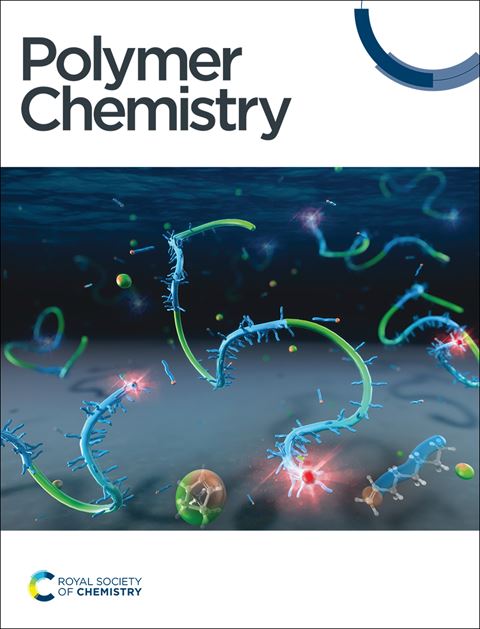利用酶进行绿色聚合:链式和阶梯式生长过程的进展
IF 3.9
2区 化学
Q2 POLYMER SCIENCE
引用次数: 0
摘要
由于对环境的影响,合成有机聚合物面临越来越多的审查,因为大多数工业单体都是以汽油为基础的。主要问题包括化石燃料消耗、温室气体排放、对不可再生原料的依赖、回收不足以及使用有毒和有害的催化剂。为了与联合国可持续发展目标(SDGs)以及Anastas和Warner的绿色化学12原则保持一致,聚合物行业必须接受一场全面的革命。生物催化为实现这些目标提供了一条有希望的途径。这篇综述鼓励聚合物界采用酶催化功能聚合物合成,展示酶作为具有绿色证书的强大工具,应该整合到该领域。为了满足特定领域的命名,我们根据更一般的机制对酶催化聚合进行分类,即阶梯聚合(SP),链式聚合(CP)和开环聚合(ROP),反映了IUPAC聚合物术语小组委员会最近对“阶梯生长”和“链式生长”命名法的改进。这种分类的目的是吸引读者对聚合过程和直接利用酶的特定试剂或单体类的兴趣。通过在教程式的回顾中展示示例和使用熟悉的机械分类,我们的目标是使聚合物化学研究人员能够将酶催化作为一种可持续和创新的工具。我们总结了最近的创新工作,讨论了挑战并提出了未来的机遇。本文章由计算机程序翻译,如有差异,请以英文原文为准。

Harnessing enzymes for greener polymerisations: advances in chain and step growth processes
Synthetic organic polymers face increasing scrutiny due to their environmental impact, as most industrial monomers are petrol-based. Key concerns include fossil fuel consumption, greenhouse gas emissions, reliance on non-renewable feedstocks, insufficient recycling and the use of toxic and harmful catalysts. To align with the United Nations Sustainable Development Goals (SDGs) and Anastas and Warner's 12 Principles of Green Chemistry, the polymer industry must embrace a total revolution. Biocatalysis offers a promising route to achieve these goals. This review encourages the polymer community to adopt enzymatic catalysis for functional polymer synthesis, showcasing enzymes as powerful tools with green credentials that should be integrated into the field. To meet field-specific nomenclature we categorise enzymatic polymerisation based on the more general mechanisms, namely step polymerisation (SP), chain polymerisation (CP), and ring-opening polymerisation (ROP), reflecting the recent refinement of ‘step-growth’ and ‘chain-growth’ nomenclature by the IUPAC's Subcommittee on Polymer Terminology. This classification aims to engage readers with interests directed towards polymerisation processes and direct utilisation of the enzymes to specific reagents or classes of monomers. By presenting examples and using familiar mechanistic categorisations in a tutorial-style review, we aim to empower polymer chemistry researchers to embrace enzymatic catalysis as a sustainable and innovative tool. We conclude the review by highlighting recent innovative works, discussing challenges and proposing future opportunities.
求助全文
通过发布文献求助,成功后即可免费获取论文全文。
去求助
来源期刊

Polymer Chemistry
POLYMER SCIENCE-
CiteScore
8.60
自引率
8.70%
发文量
535
审稿时长
1.7 months
期刊介绍:
Polymer Chemistry welcomes submissions in all areas of polymer science that have a strong focus on macromolecular chemistry. Manuscripts may cover a broad range of fields, yet no direct application focus is required.
 求助内容:
求助内容: 应助结果提醒方式:
应助结果提醒方式:


